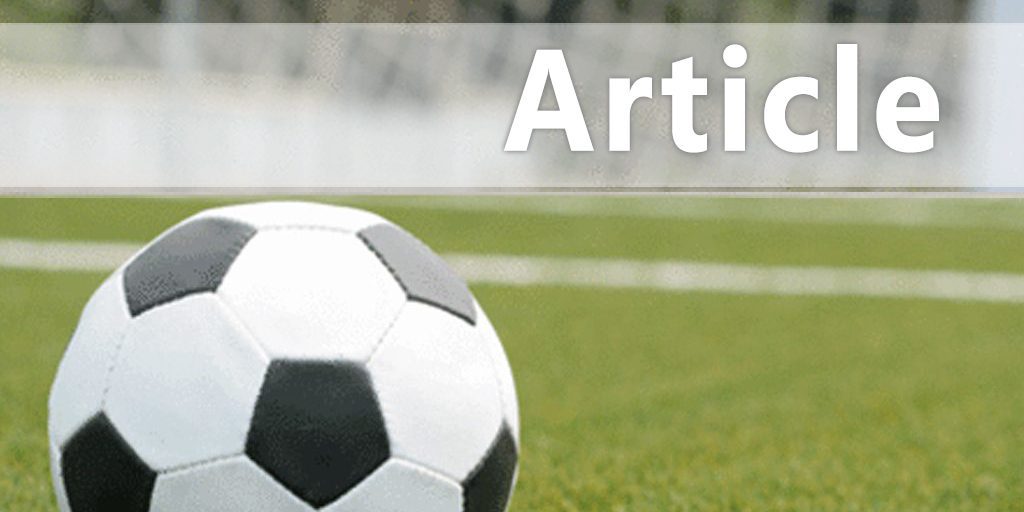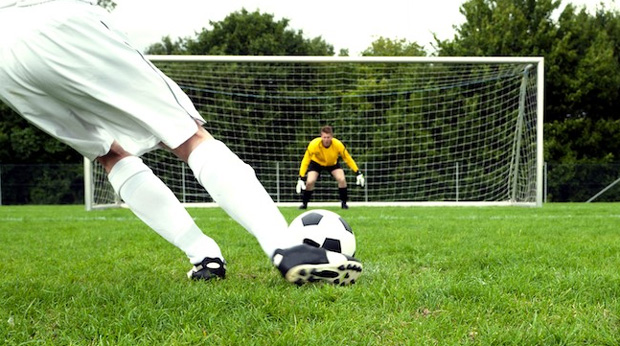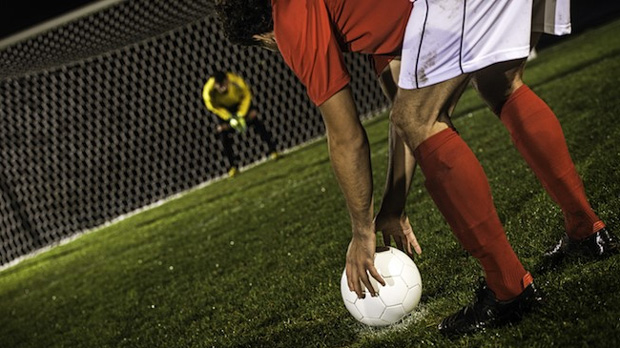| Soccer Goalies: Stop a Penalty Kick With These 3 Tips |
| By: Tyler Tredway
Provided by: STACK When saved, the keeper comes away looking like a hero! But odds aren't in the keeper's favor. Throughout the history of the World Cup, shooters have scored on roughly 72 percent of all penalty kicks. That means the keeper is only successful on a mere 28 percent of penalty kick attempts. The penalty kick often puts the keeper in a vulnerable position where they feel forced to blindly guess which way to move to make the save. However, it doesn't have to be this way! Below are three tips that can help you increase your odds of blocking a penalty kick. The more calm you are, the better you'll be able to utilize these tips. Remember - no one's really expecting you to stop a penalty kick due to the odds being heavily on the shooter's side. There's no pressure. Just relax, focus and do your best. 1. Read the Opponent's Body Language
There are three major points to watch for when the shooter is preparing for a penalty kick: the direction the shooter approaches the ball, their plant foot and their hips. The shooter generally shoots opposite of the direction from which they approach the ball. So if the shooter approaches from your left, chances are they are aiming toward the right side of the net. The plant foot is also a great indicator of the direction of the shot. If the shooter's plant foot is pointed toward the right side of the goal, they tend to shoot to the right (and vice versa). The third and final body language cue is the direction of the shooter's hips. Just like in basketball, the midsection doesn't lie. If the shooter opens their hips in one direction, that is the most likely destination of the shot. It's very difficult to make your hips shift into a different direction than your feet, so pay close attention to where the shooter positions their midsection. The more reps you get, the better you'll be at reading these details. That's why it's key to find a practice partner who is willing to take multiple penalties against you. 2. Dial in on the Eyes
As the shooter prepares to take the penalty, their eyes will generally make a quick glance toward the direction at which they'll be aiming. This is the most common tell when it comes to stopping a penalty kick. However, if it seems that a player is only looking in one direction and is being quite obvious about it, they're likely trying to play a mind game with you. In such cases, odds are the shooter will go in the opposite direction of where they're staring. So while a quick glance at one side of the net often indicates their genuine intent, a prolonged, obvious stare at one area usually indicates they'll be looking to aim elsewhere. 3. When in Doubt, Dive Low
While a shot in the upper corners has the highest percentage of going in, it also takes the greatest amount of skill on the penalty taker's part. The risk of missing the goal completely is higher when a shooter aims for those top corners. That's why most shooters will pick to shoot the ball low and toward the right or left post. If you don't have a good read on the shooter's intentions, diving toward a low corner is a higher percentage play than diving toward a high corner. A few other factors to consider: • Thirty percent of penalty kicks are shot down the middle. Most keepers choose to dive to the left or right over 90 percent of the time, because even if they miss, they won't be blamed for not making a decision. But staying in the middle shouldn't be out of the questions, as nearly a third of all penalty kicks are shot in that area. • Even choosing the right direction doesn't guarantee a save. It provides greater odds, but it isn't a lock. To increase your odds, extend the arm closest to the ground as far as possible during your dive. This will allow you to cover more of the goal. With your top arm, extend it at roughly a 45-degree angle during your dive. This will allow you to quickly move the top arm in any direction to increase your chance of making the save. • Do your research. Find footage on your opponents if possible and look at their shot tendencies. Most players feel more comfortable when shooting the ball in certain directions, and every player is different. More than likely, if your opponent chooses to go to one side more than 60 percent of the time on regular shots, they will shoot that direction more often on their penalty kicks. Defenders typically go in the same direction as their dominant foot. If they're kicking with their right foot, they will shoot right more than 75 percent of the time. |










